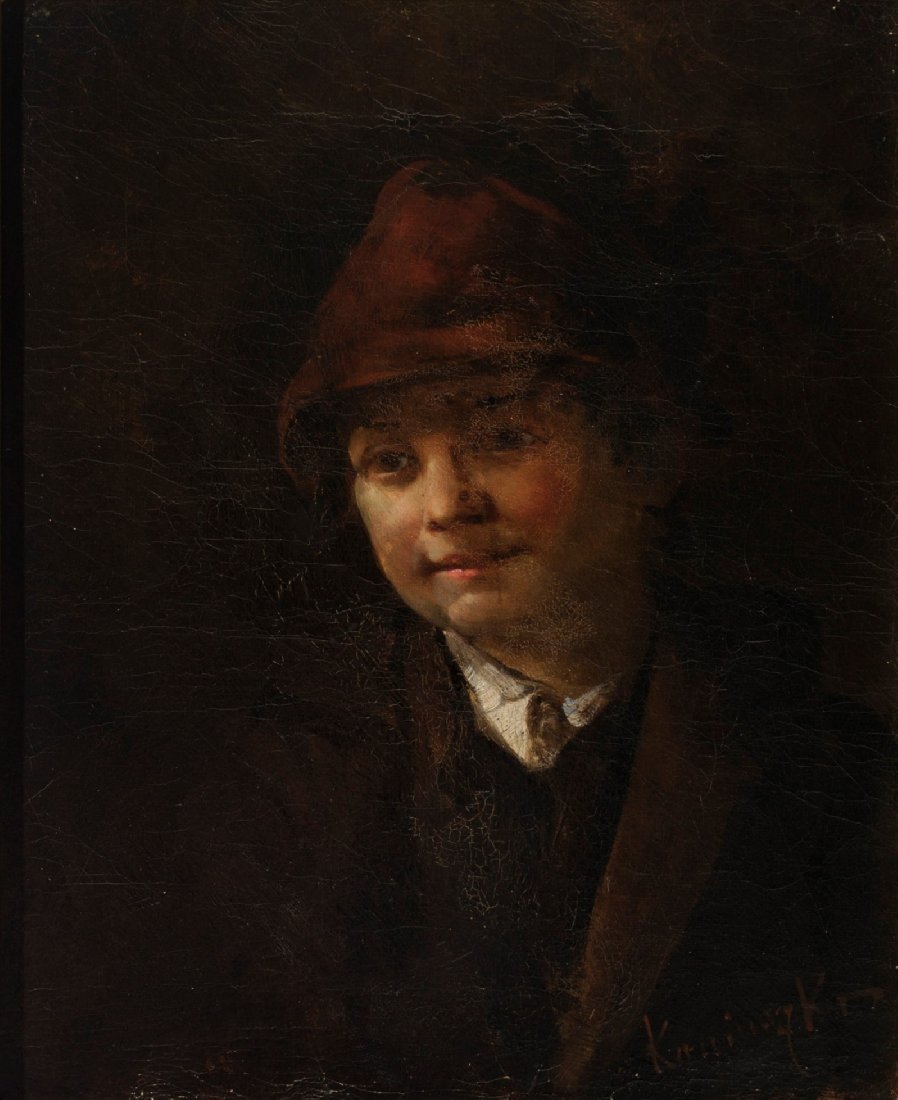Description:
Wacław Koniuszko (1854-1900) studied painting at the Krakow Academy of Fine Arts and the Munich Academy. In 1885, an illness that caused partial paralysis prevented him from painting, but after ten years he began to learn painting again under the guidance of Wyczółkowski. He died, finally defeated by the disease at the age of forty-six.
Description of the painting:
A boy’s face emerges from the dark background. Large, dark, cheerful eyes look kindly beyond the frame of the painting. Blushing cheeks are outlined and delicate, pink lips curl into a slight smile. The figure exudes tranquility, which is visible both in the thoughtful face of the boy and in the relaxed posture of the silhouette. He is not constrained by the painter’s observation or impatient with posing. The boy’s clothes merge almost with the background, appearing modest and worn.
In Koniuszko’s work, scenes depicting the lives of lower social classes often repeat themselves. The artist was not born into a wealthy family himself, but was the son of a Krakow tailor, so perhaps for this reason not only children but also adults from poorer neighborhoods of Krakow felt comfortable with him and allowed him to be portrayed. He paid particular attention to observing the everyday life of Krakow Jews, but also the city itself.
Koniuszko learned painting for an extraordinarily long time. He started as a twelve-year-old boy and spent about ten years at the Krakow Academy of Fine Arts, after which he went to Munich for further studies. Unfortunately, when he returned to Poland in 1885 he fell ill. He was partially paralyzed and, suffering from the disease, could not create. Only ten years later, under Wyczółkowski’s care, he clumsily re-learned to paint like a child. He lost the fight against the disease five years later, in 1900, at the age of forty-six.Koniuszko painted “The Boy” when he was only twenty-three years old. Despite his young age, he was already a formed artist. In the picture he captured not only an excellently observed physiognomy, brought out by a delicate chiaroscuro modeling, but also the mood of peaceful contemplation and childlike trust. Thanks to the narrowed range of colors, he created an intimate atmosphere focused on the inner world of the boy.


